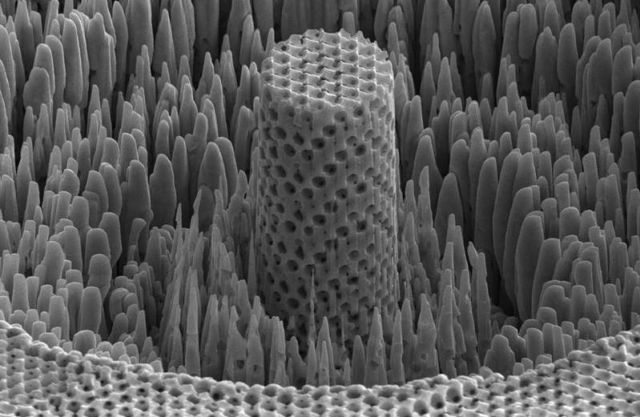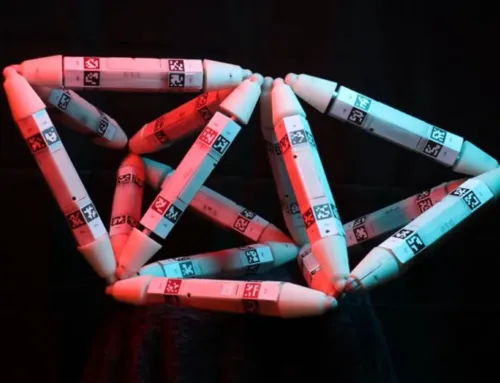Scientists have built a sheet of nickel with nanoscale pores, that make it as strong as titanium, but four to five times lighter.
Scientists at the School of Engineering and Applied Science, the University of Illinois at Urbana–Champaign and the University of Cambridge, have found that the empty space of the pores, and the self-assembly process in which they’re made, make the porous metal akin to a natural material, such as wood.
Above, a microscopic sample of “metallic wood.” Its porous structure is responsible for its high strength-to-weight ratio, and makes it more akin to natural materials, like wood. Image credit Penn Engineering
And just as the porosity of wood grain serves the biological function of transporting energy, the empty space in the researchers’ “metallic wood” could be infused with other materials. Infusing the scaffolding with anode and cathode materials would enable this metallic wood to serve double duty: a plane wing or prosthetic leg that’s also a battery.
The study was led by James Pikul, assistant professor in the Department of Mechanical Engineering and Applied Mechanics at Penn Engineering.
James Pikul says:
“The reason we call it metallic wood is not just its density, which is about that of wood, but its cellular nature. Cellular materials are porous; if you look at wood grain, that’s what you’re seeing—parts that are thick and dense and made to hold the structure, and parts that are porous and made to support biological functions, like transport to and from cells.”
The study published in Nature Scientific Reports
source Pen University






Leave A Comment